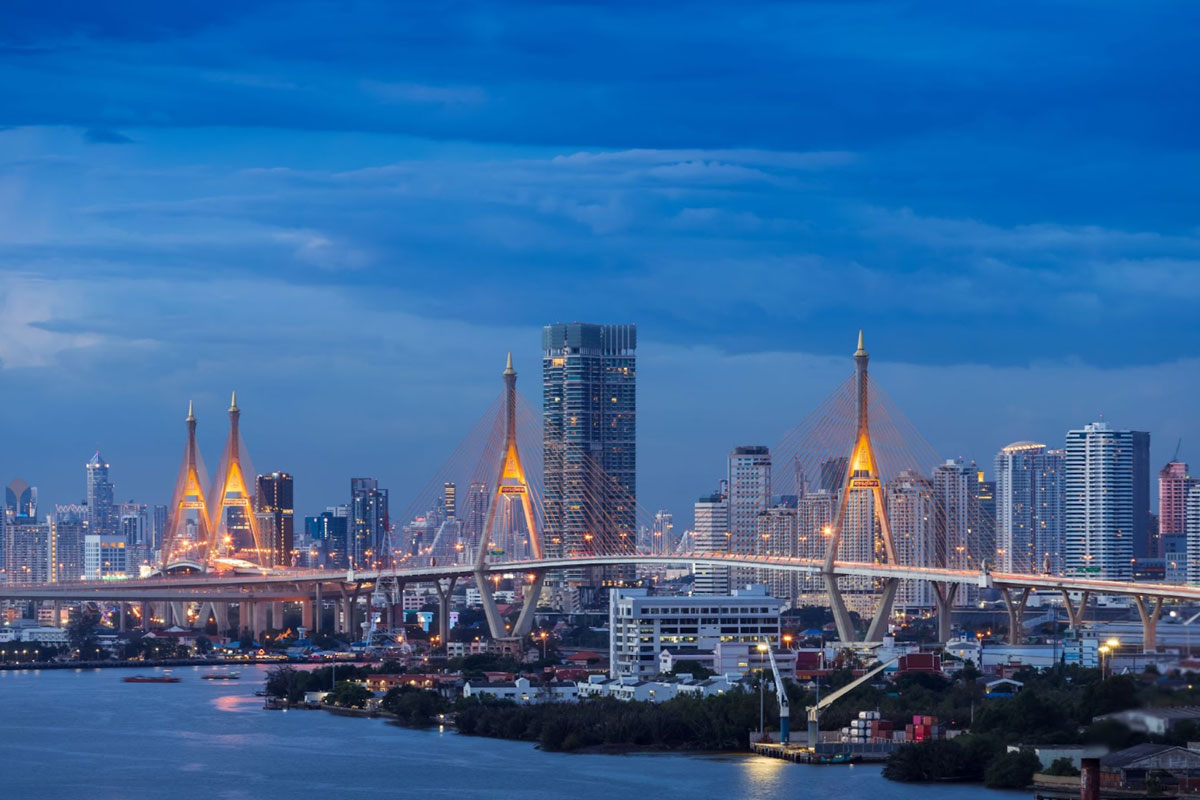Asia’s talent market presents a striking contradiction in 2025. Global economic institutions warn of slower growth and trade disruptions, yet business leaders across the region express their strongest hiring confidence in years. This curious paradox means forward-thinking organisations will need to walk a fine line when looking to hire in 2025.
Let us allow the numbers to set the stage: the International Labour Organisation has downgraded the Asia-Pacific’s employment growth to 1.7%, representing 34 million new positions, rather than the originally projected 38 million. On the other side of the coin, this latest survey shows that Asia-Pacific employers maintain a +30% Net Employment Outlook, ranking second globally for hiring optimism.
This disconnect between macro caution and micro confidence creates an unusual mix of new opportunities and legitimate risks for businesses operating across the region. Companies that understand and adapt to 5 critical trends will gain tangible advantages in attracting top talent. Those that rely on traditional approaches, however, will likely find themselves outmanoeuvred by more agile competitors.
Our research shows that success in 2025 will depend on recognising how economic pressures reshape hiring patterns, skills gaps create new premium talent categories, employee expectations shift fundamentally, artificial intelligence transforms recruitment processes, and regional markets diverge in their specific characteristics.
For business leaders and HR professionals, understanding these trends can mean the difference between securing the talent that drives growth and watching competitors recruit your target candidates. Miss these shifts, and your hiring costs will soar while quality candidates slip away to organisations that offer what today’s workforce actually wants.
Hiring Trends in Asia to Keep in Mind

1. Economic Resilience Drives Selective Growth
Our research shows that Asia’s hiring markets appear to be splitting into distinct camps based on economic confidence and strategic positioning. This study found that India leads with exceptional optimism, at +42% Net Employment Outlook. China records +28% and Singapore reaches +24%. Hong Kong shows restraint at +8%, a sign of their unique economic challenges.
We believe that two primary drivers are fuelling this surge. The same study found that company expansion motivates 37% of APAC employers to increase staff. Technological advancement needs drive 24% of hiring decisions. This creates a K-shaped recovery where high-tech, high-growth sectors thrive, contrasting with traditional industries facing headwinds.
The region’s vulnerability remains a very real factor. Nearly 55 million jobs across Asia-Pacific link directly to U.S. demand, with manufacturing accounting for 27 million positions. Current trade tensions could disrupt these connections.
Forward-thinking employers are responding by shifting toward flexible workforce models. Contract and project-based hiring appear to be growing as companies seek agility without long-term payroll commitments. This approach allows scaling while still managing economic uncertainty and accessing specialised skills when needed. Make no mistake, this shift represents a fundamental change in how organisations structure their talent acquisition strategies across the region.
2. The Critical Skills Revolution

It is no longer an industry secret that the talent shortage across Asia has reached crisis levels. A staggering 77% of APAC employers report difficulty filling key roles, a sharp increase from 45% in 2014. This scarcity is reshaping how companies approach recruitment and compensation.
We see 3 skill categories that are already demanding premium salaries and instigating fierce competition:
- Digital economy skills dominate demand, with AI and machine learning specialists leading the charge. Cybersecurity roles in Southeast Asia saw headcount grow 160% year-on-year, while cloud computing expertise becomes table stakes across industries.
- Green economy skills create a second tier of high-demand talent. Sustainability management, carbon footprint analysis, and renewable energy engineering now command significant premiums as governments push even harder for net-zero commitments from their constituents.
- Human-centric skills create the third category. Analytical thinking, adaptability, and emotional intelligence cannot, and is not likely to be replicated by machines, making these capabilities increasingly valuable.
India faces particular intensity, with 80% of employers struggling to find skilled talent. The greatest shortages occur in IT & Data roles (32% of employers affected), Engineering (27%), and Sales & Marketing (24%).
Governments, to their credit, are responding with massive reskilling programmes. Singapore’s SkillsFuture initiative and South Korea’s targeted youth employment platforms represent early examples of policy intervention addressing the widening skills gap that threatens regional competitiveness.
3. Employee Expectations Shift Fundamentally
The modern Asian workforce operates by a completely different set of priorities than their predecessors. This shift goes well beyond generational differences and reflects deeper changes in how people view work’s role in their lives. As markets become more globalised, Western corporate culture influences the East.
Financial security remains important, but employees now demand comprehensive life integration. They expect employers to support their mental health, physical wellbeing, and personal development simultaneously. The pandemic accelerated this transformation, making flexible work arrangements a baseline expectation rather than a perk.
Career progression expectations have evolved beyond traditional ladder-climbing. Workers want continuous learning opportunities, cross-functional exposure, and clear pathways that may include lateral moves. They seek employers who invest in their long-term capabilities, not just their immediate productivity.
Purpose-driven work has gained prominence across all age groups. Employees want to understand how their contributions create meaningful impact. Environmental responsibility and social governance now influence job decisions as much as salary packages.
Work-life integration has replaced work-life balance as the goal. Employees want autonomy over when and where they work, with trust-based management replacing micromanagement approaches. The companies that recognise these shifts and restructure their employee value propositions accordingly will build loyal, engaged workforces. Those that cling to outdated models will face continuous talent churn and struggle to attract quality candidates in increasingly competitive markets.
4. AI Transformation and Trust Challenges

Artificial intelligence adoption in recruitment grows across Asia, creating unexpected friction with job seekers. A survey of talent acquisition professionals in Southeast Asia found 79% believe AI will reshape the future of hiring. In Singapore, 98% of HR leaders report using AI tools in their work.
The benefits drive adoption. AI-powered recruitment systems reduce the time-to-fill positions by 25-30%. This is due to automated screening, intelligent sourcing, and preliminary video interviews, which free recruiters for more strategic activities. When designed responsibly, AI tools can genuinely help reduce unconscious bias in the initial screening stages.
Candidates express anxiety about these changes. 82% of Hong Kong graduates believe AI and automation will make securing their desired job more challenging. The global figure stands at 67%. Their main concerns include unfair algorithmic screening and career path disruption.
Recruitment fraud adds to these fears. Sophisticated deepfake videos and AI-generated applications make detecting imposters harder. Some 76% of hiring managers report this challenge.
The solution, in our eyes, lies in transparency. Companies can publish AI ethics guidelines, explain algorithmic decision-making to candidates, and provide constructive feedback. This “Explainable AI in HR” approach transforms anxiety into trust, all while building stronger employer brands.
5. Regional Market Differentiation
Asia’s hiring markets exhibit personalities as distinct as the nations themselves, which demand specific, culturally sensitive approaches. India presents high-growth, high-challenge conditions with 9% job market growth projected. The e-commerce sector leads with 25% growth expectations. Renewable energy shows 20% growth, healthcare reaches 18%.
China operates dual-track economics with overall salary increases averaging 5%. Tech hubs like Shenzhen and Beijing see substantial salary growth for AI specialists and data security experts. Youth unemployment remains a structural challenge.
Japan demonstrates strategic, demographic-driven hiring with unemployment projected to decrease to 2.4%. The focus centres on technology, sustainability roles, and healthcare innovation to address an ageing population.
Singapore operates as a flexible, high-cost hub where we’ve overserved job changers command 12-15% salary increases. Contract and project-based hiring grows as companies manage operational costs.
South Korea shows reform-driven dynamics with record 63.2% employment rates. Government legislation extends paternity leave and strengthens wage payment penalties.
Understanding these distinct market characteristics proves more effective than applying uniform regional strategies. Of course, managing multi-market hiring across such diverse economies requires deep local knowledge of regulations, cultural expectations, and compensation norms. At InCorp, our teams provide on-ground insights that make the difference between successful talent acquisition and costly missteps.
Where to Next With InCorp
Asia’s hiring markets in 2025 present both exceptional opportunities and complex challenges that demand responses that are far more nuanced than traditionally needed. The convergence of economic uncertainty, acute skills shortages, evolving employee expectations, AI transformation, and regional market differences creates a talent acquisition environment unlike any we’ve seen before.
Success depends on understanding that traditional hiring approaches no longer deliver results. Companies must embrace flexible workforce models, invest in comprehensive employee value propositions, adopt transparent AI practices, and develop market-specific strategies that acknowledge each region’s unique characteristics.
The organisations that adapt quickly will secure the talent that drives growth. Those that delay risk falling behind competitors who recognise these shifts and act decisively.
At InCorp, our recruitment teams across Asia provide the local market knowledge and strategic guidance that transforms these challenges into competitive advantages. We help businesses build effective talent acquisition strategies that work in each specific market.
Contact InCorp today to discuss how our regional expertise can help you attract, secure, and retain the talent your business needs.
FAQs about Hiring Trends in Asia
What are the biggest hiring challenges in Asia for 2025?
- Skills shortages affect 77% of APAC employers, with particular difficulties in IT & Data (32%), Engineering (27%), and Sales & Marketing (24%). Regional market differences, evolving employee expectations beyond salary, and AI implementation challenges compound these issues.
Which Asian countries have the strongest hiring outlook for 2025?
- India leads with +43% Net Employment Outlook, followed by China at +32% and Singapore at +27%. Japan and Hong Kong show more cautious outlooks at +11%, reflecting their unique economic challenges and market dynamics.
How is AI changing recruitment processes in Asia?
- 98% of Singapore HR leaders use AI tools, while 79% of Southeast Asian talent professionals believe AI will reshape hiring. AI reduces time-to-fill by 25-30% but creates candidate anxiety, with 82% of Hong Kong graduates worried about algorithmic bias in screening.


